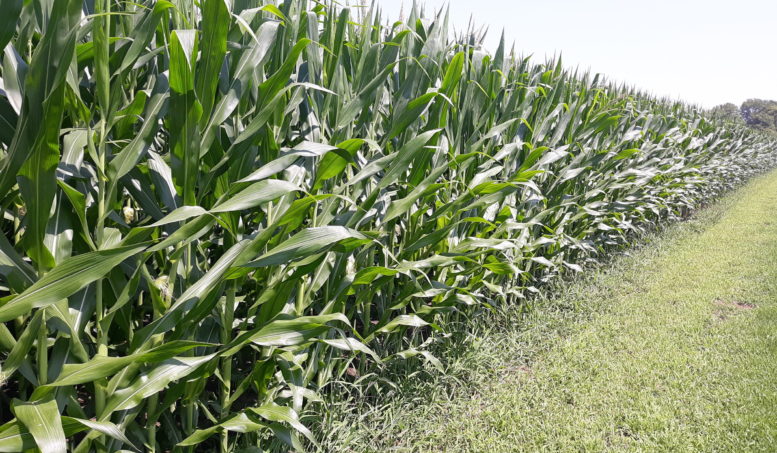By JAN LARSON McLAUGHLIN
BG Independent News
Like many farmers in Wood County, Jim Carter’s fields are waterlogged.
“They’re soggy,” said Carter, administrator of the Wood Soil and Water Conservation District. So swampy that he joked, “I’d rather not acknowledge that’s my field.”
Two years ago, most Wood County fields went fallow after flooding prevented farmers from planting crops. Last year, the crops were planted, but dry conditions left fields parched much of the summer.
This year, frequent downpours and humid conditions are creating different concerns.
We’re not talking gentle rains – but deluges that send down 4 to 7 inches overnight in mid-July in the Bloomdale area, and 3 inches this weekend north of Bowling Green.
The rain totals across the county are above average, but the notion of “normal” doesn’t seem to apply much anymore, Carter said.
“That’s kind of gone by the wayside,” he said.
Most of the crops in Wood County got a healthy start in the spring, before the torrential rains. The most noticeable ill effect of the heavy rains are the yellow patches in otherwise green soybean fields.
“Beans don’t like to have wet feet,” Carter explained.
So far, most of the crops appear to be thriving – but looks can be deceiving.
The combination of damp fields, cool nights and moisture in the mornings promotes fungus and mold on crops. So more airplane runs are being made to spray fungicide on corn and beans
Farmers accustomed to applying herbicide in the fields have been thwarted by wetness.
“Field conditions haven’t allowed some of that to happen,” Carter said. And frequent rains have shrunk the window for spraying. “It’s a risk and reward type of thing.”
Farmers also have to weigh if they want to risk putting ruts in their fields that may compact the soil and affect yields for years to come, Carter said.
Soybeans may look really healthy – growing waist high and promising high yields. But the key is in the node spacing – not the height of the plants.
“If the plant’s putting all its energy into vertical growth,” it doesn’t have enough to focus on producing healthy beans, he said.
Extra moisture and humidity allows disease to spread faster, such as rust or blight on corn stalks that interrupt photosynthesis needed for the crop to prosper.
Most local farmers were able to harvest small grains, like wheat, rye and oats, the first week of July. But some who missed that window are still waiting for the fields to dry enough to harvest them. Those grains are now deteriorating, Carter said, and straw still in the fields is likely to have fungus and mold.
The problem isn’t the lack of drainage in fields – but rather the lack of drainage updates.
By this point, all farm fields in the Wood County portion of the Great Black Swamp have been tiled, Carter said. But aging tiles are often spaced too far apart in fields to be effective, or are crumbling from being made with clay or concrete.
“They are starting to fail,” Carter said.
And when the drainage fails, the swamp tries to reclaim the land.
The tile being installed now in fields is plastic.
“We hope it has a lot of longevity,” Carter said. “It’s a long-term investment that should have long-term benefits.”
There is plenty of time before harvest for the fields to get in good shape. Soybeans are usually harvested in the last couple weeks in September through mid-October. Then comes the corn.
“Most people’s goal is to be finished with corn in the first few weeks of November,” Carter said.
“For the most part, I think guys are still optimistic,” he said. “We’ll know in the fall.”

